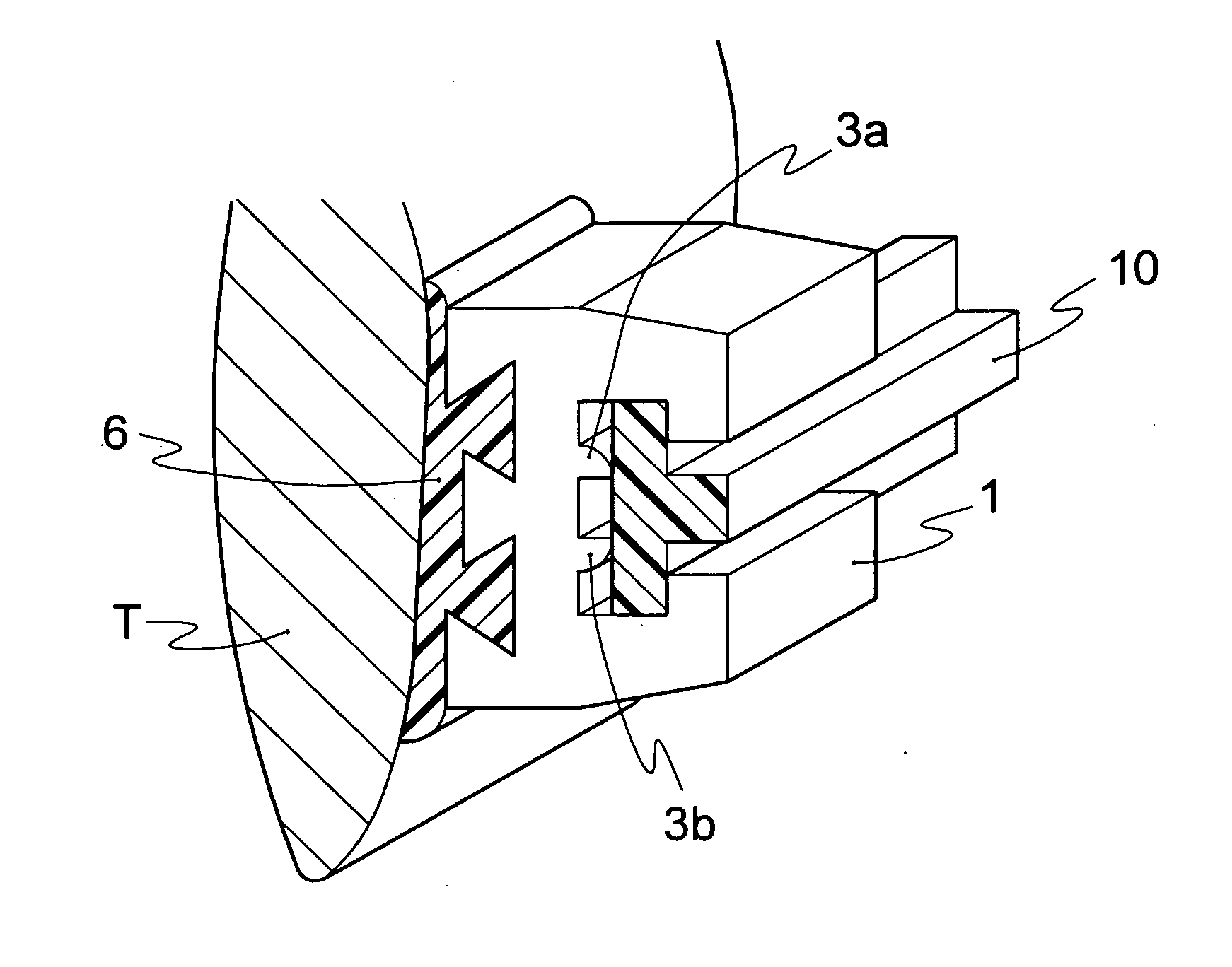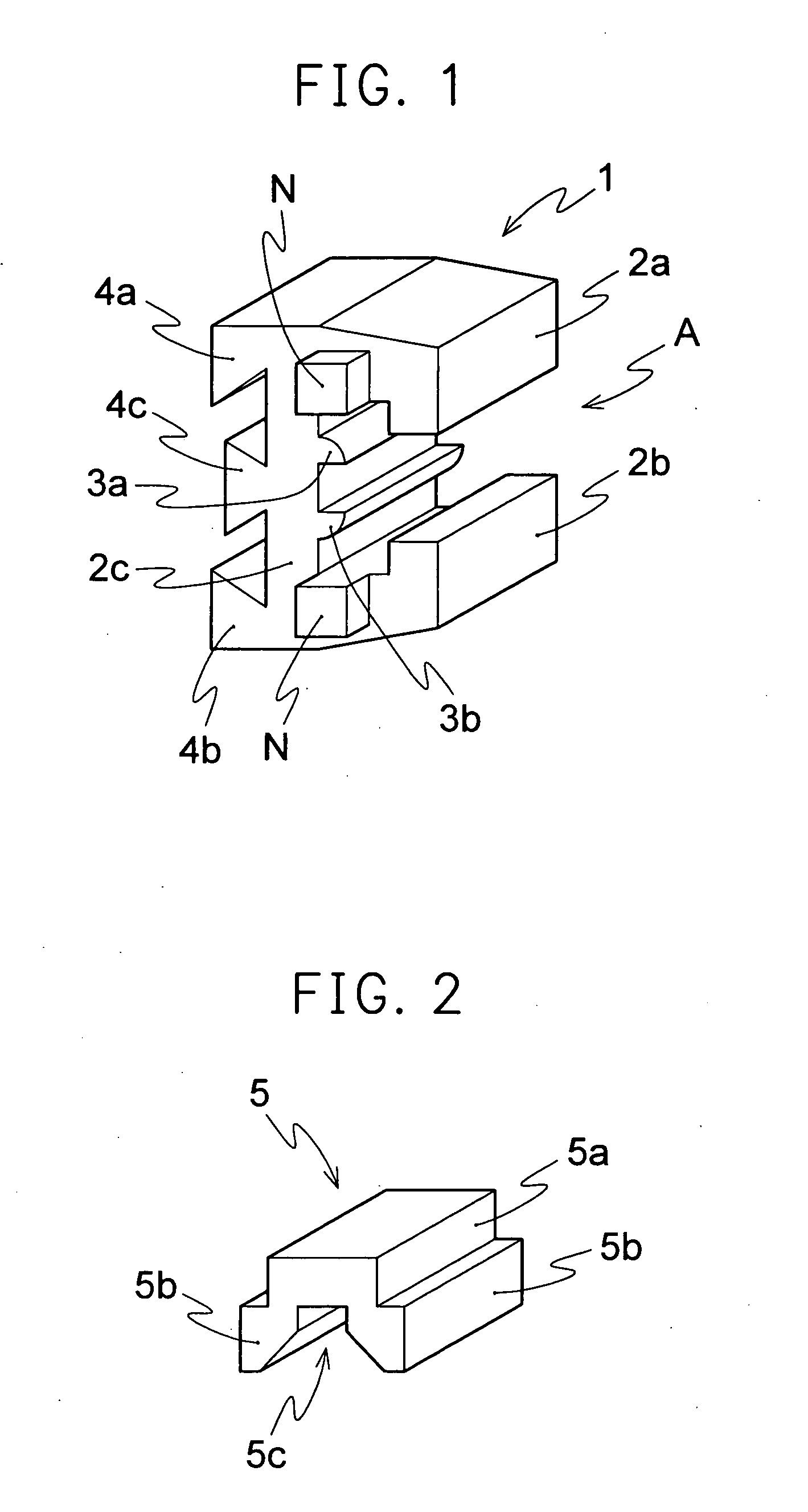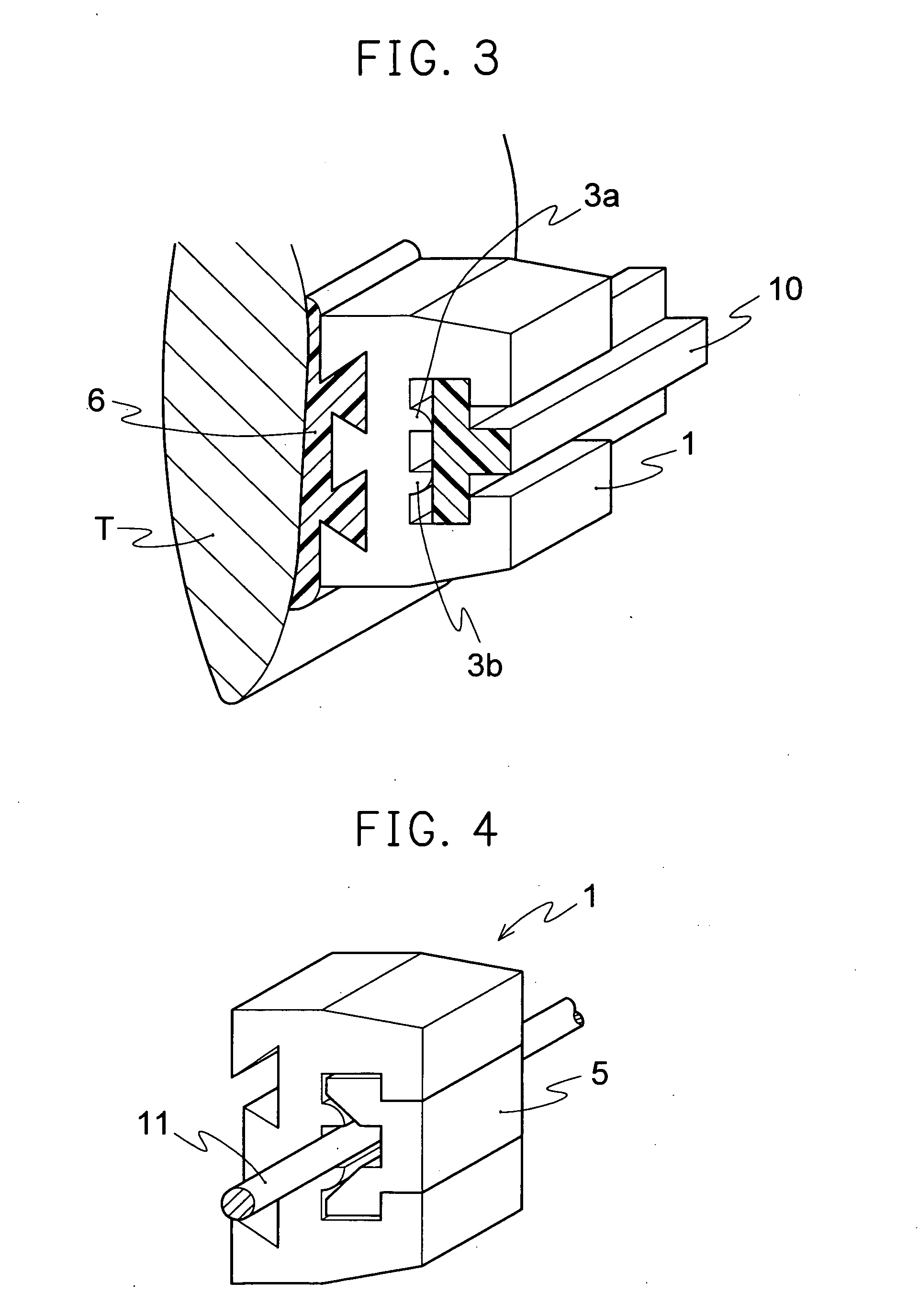Orthodontic bracket and arch wire
a technology which is applied in the field of orthodontic brackets and arch wires, can solve the problems of large friction and poor slippage, insufficient torque, and orthodontic brackets that are easy to disengage from the tooth surfa
- Summary
- Abstract
- Description
- Claims
- Application Information
AI Technical Summary
Problems solved by technology
Method used
Image
Examples
embodiment 1
[0067] An orthodontic bracket (hereinafter, referred to as “bracket”) 1 illustrated in FIG. 1 includes a base 2c which is secured to a tooth T (see, FIG. 3) and claws 2a, 2b having a L-shape cross section, which are protruded from the upper and lower ends of the base 2c such that they are faced to each other. The base 2c and the claws 2a, 2b constitute a wire engaging slot A having a T-shape cross section. Fixed spacers 3a, 3b are provided on the bottom of the wire engaging slot A (namely, the portion of the base 2c which lies between the claws 2a, 2b). The bracket 1 is made of the same material as that of the aforementioned conventional bracket.
[0068] Referring to FIG. 1, the fixed spacers 3a, 3b are shown as continuous line-shaped (or protruded strip) protrusions, however, they are not limited to this configuration and may be configured from combinations of several pillars or pillars and protruded strips.
[0069] The “line-shaped protrusions” provided on the inside bottom of the b...
embodiment 2
[0071] According to the present embodiment, as illustrated in FIGS. 4 and 5, a movable spacer 5 including two legs 5b, 5b and a coupling portion 5a coupling the two legs 5b, 5b is movably inserted through the above engaging slot A. As illustrated in FIGS. 4 and 5, when the movable spacer 5 is inserted into the engaging slot A, the movable spacer is placed in the engaging slot such that the two legs 5b, 5b straddle the fixed spacers 3a, 3b and at least the outer surfaces of the legs 5b, 5b are in contact with the inside surfaces of the claws 2a, 2b of the bracket (see FIGS. 4 and 5). In other words, preferably, the gap between the tip ends of the above two claws 2a, 2b is blocked with the coupling portion 5a, and the space between the root portions of the claws 2a, 2b other than the fixed spacers 3a, 3b and the arch wire is substantially blocked with the legs 5b, 5b (namely, almost all the space other than the space required for inserting an arch wire having a round or rectangular cr...
embodiment 3
[0076] As illustrated in FIG. 11, the bracket of the present embodiment has undercuts constituted by two legs 4a, 4b each having a substantially dovetail cross section and formed at the position which is faced to the surface of a tooth. The undercuts may have curved surfaces such as partial cylindrical surfaces as illustrated in FIG. 13 or elliptic surfaces, instead of the tapered surfaces of the legs 4a, 4b having a dovetail cross section of FIG. 11. Also, an additional leg 4c having a dovetail cross section may be provided between the legs 4a, 4b having a dovetail cross section (see FIG. 12). The number of the additional leg 4c having a dovetail cross section may be one or more than one. Also, as illustrated in FIG. 14, the undercuts may be formed from rectangular cylinders 4a, 4b and a member 4c formed from a combination of a rectangular cylinder and a substantially elliptic cylinder or circular cylinder.
[0077] The undercuts allows the bracket to have a cuneiform physical bondin...
PUM
 Login to View More
Login to View More Abstract
Description
Claims
Application Information
 Login to View More
Login to View More - R&D
- Intellectual Property
- Life Sciences
- Materials
- Tech Scout
- Unparalleled Data Quality
- Higher Quality Content
- 60% Fewer Hallucinations
Browse by: Latest US Patents, China's latest patents, Technical Efficacy Thesaurus, Application Domain, Technology Topic, Popular Technical Reports.
© 2025 PatSnap. All rights reserved.Legal|Privacy policy|Modern Slavery Act Transparency Statement|Sitemap|About US| Contact US: help@patsnap.com



